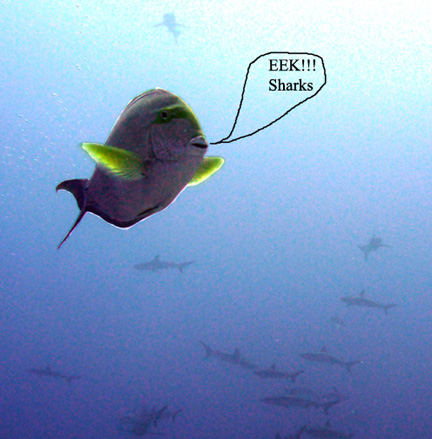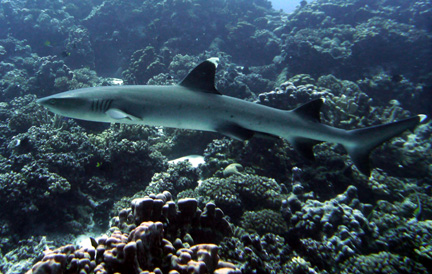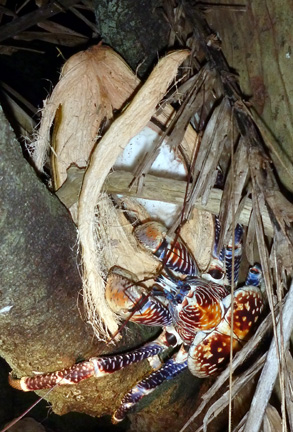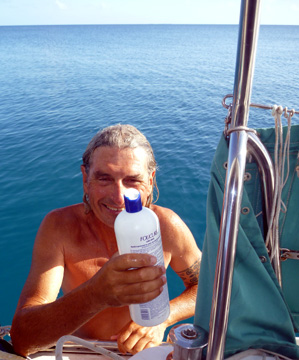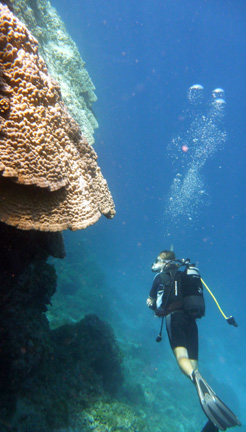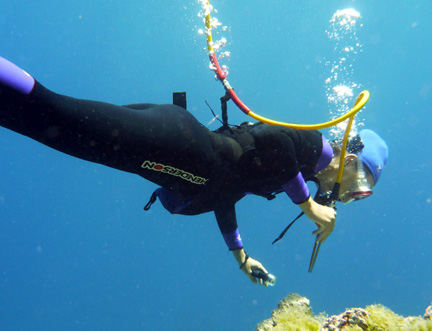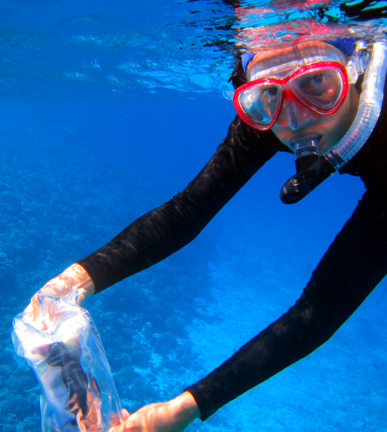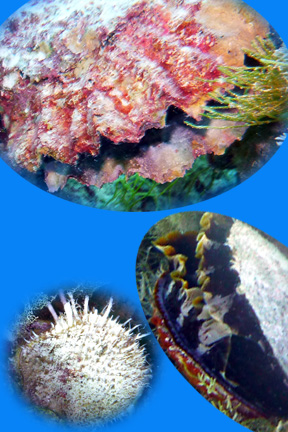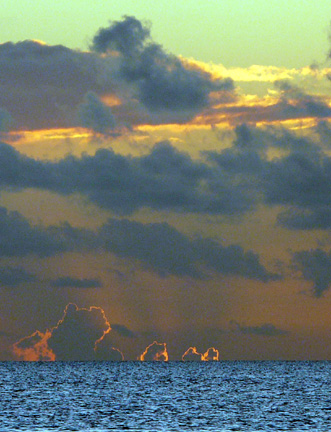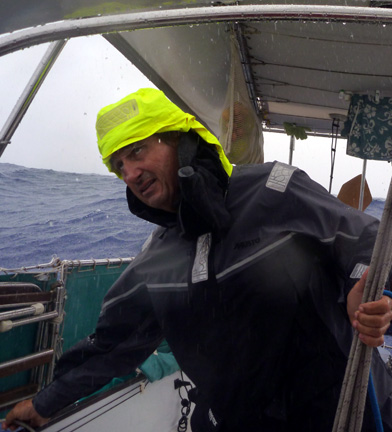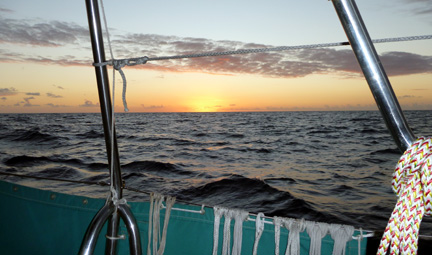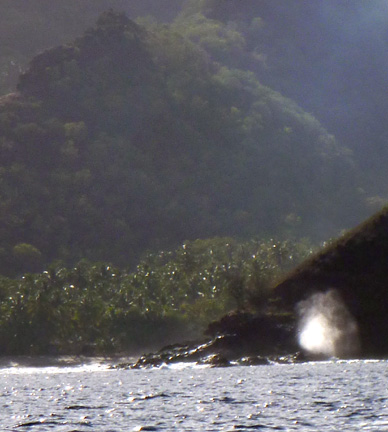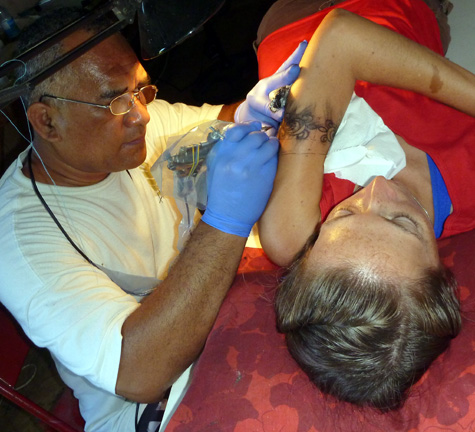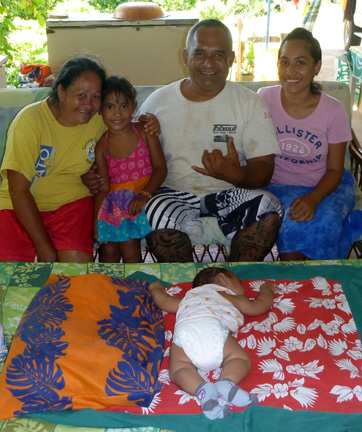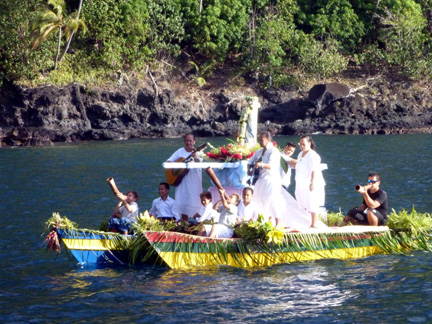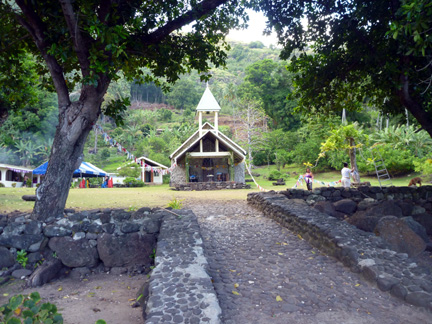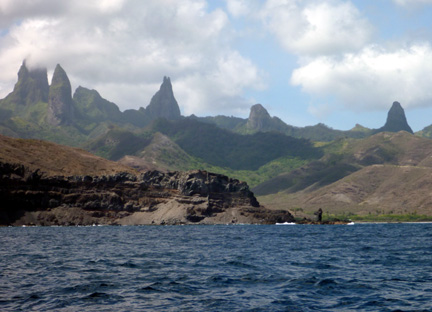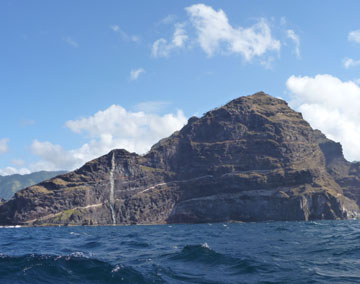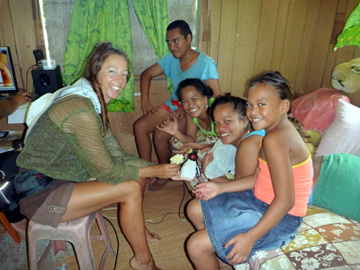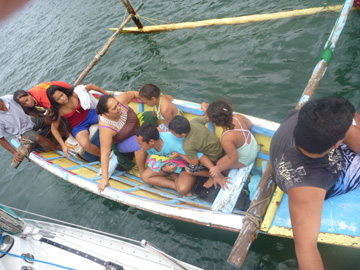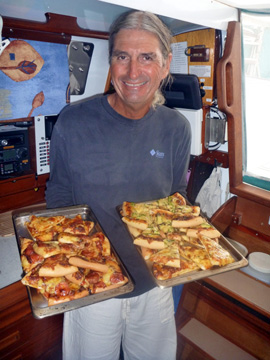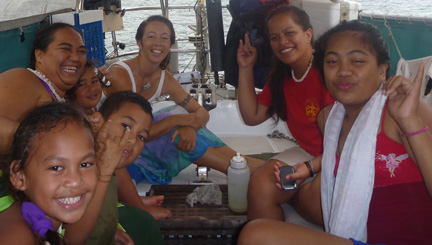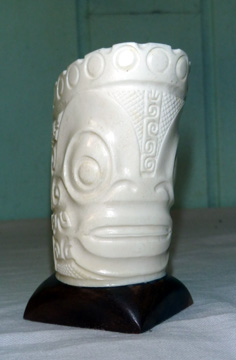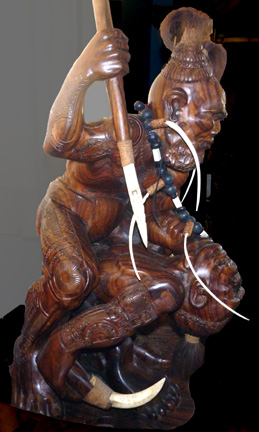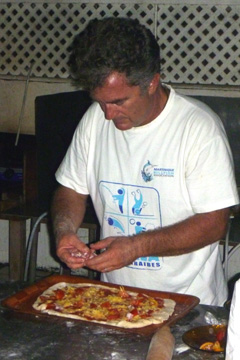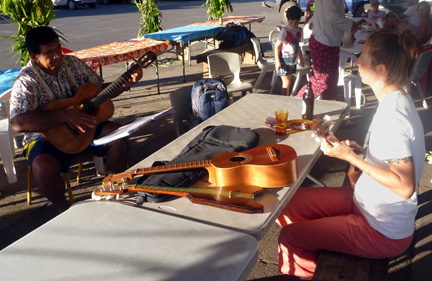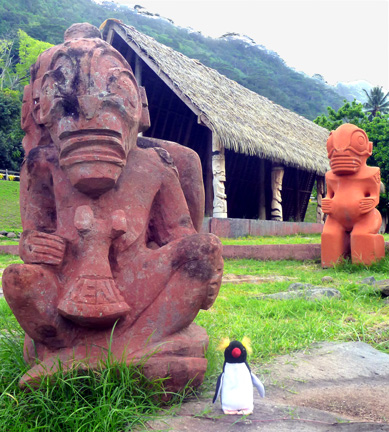|
|
The Tuamotus are all about the world underwater. The palm-tree covered motus have bird colonies, huge land crabs, and lots of interesting shells on beautiful beaches. But they surround a protected lagoon that is just teeming with fascinating corals, colorful fish, and reef sharks that patrol like the neighborhood dogs (we nicknamed them “puppies”). We were in the water nearly everyday during our stay here.
Paul took advantage of the professional dive outfits at Fakarava to dive the famous fast-moving passes. We don’t usually use our hookah (which our friends call “the umbilical air cord machine”) in passes, since the current could wrap the hoses around a coral head. Paul loved being swept through gorgeous coral and schools of fish, though the 3-knot speed of the ride made it hard to take close-ups. Sharks school in the passes, holding position and letting the current carry oxygen into their gills and potential food into their mouths. Though these are mostly harmless reef sharks, their strength of numbers is impressive. The fish appearing to run to the divers for safety has not been pasted in – it’s colors have been enhanced against the backlight, but it really was swimming there.
Tahanea has a small pass that, combined with the crystal-clear water, meant we could drift through the pass with snorkels, hanging onto the dinghy. We drifted over that coral garden several times, seeing colorful parrot fish, wrasses, and plenty of sharks. The white-tip reef shark is one of the few sharks able to sit still on the bottom, but we weren’t taken in by its sleepy attitude. The last time we got in the water for this drift-snorkel there was a much larger (2+ meters) silver-grey shark that was swimming towards us interestedly. Bonnie screamed and jumped back in the dinghy, prompting everyone else to do the same. In retrospect we realized that it might have been very friendly, and we might have been very rude. Maybe.
|


